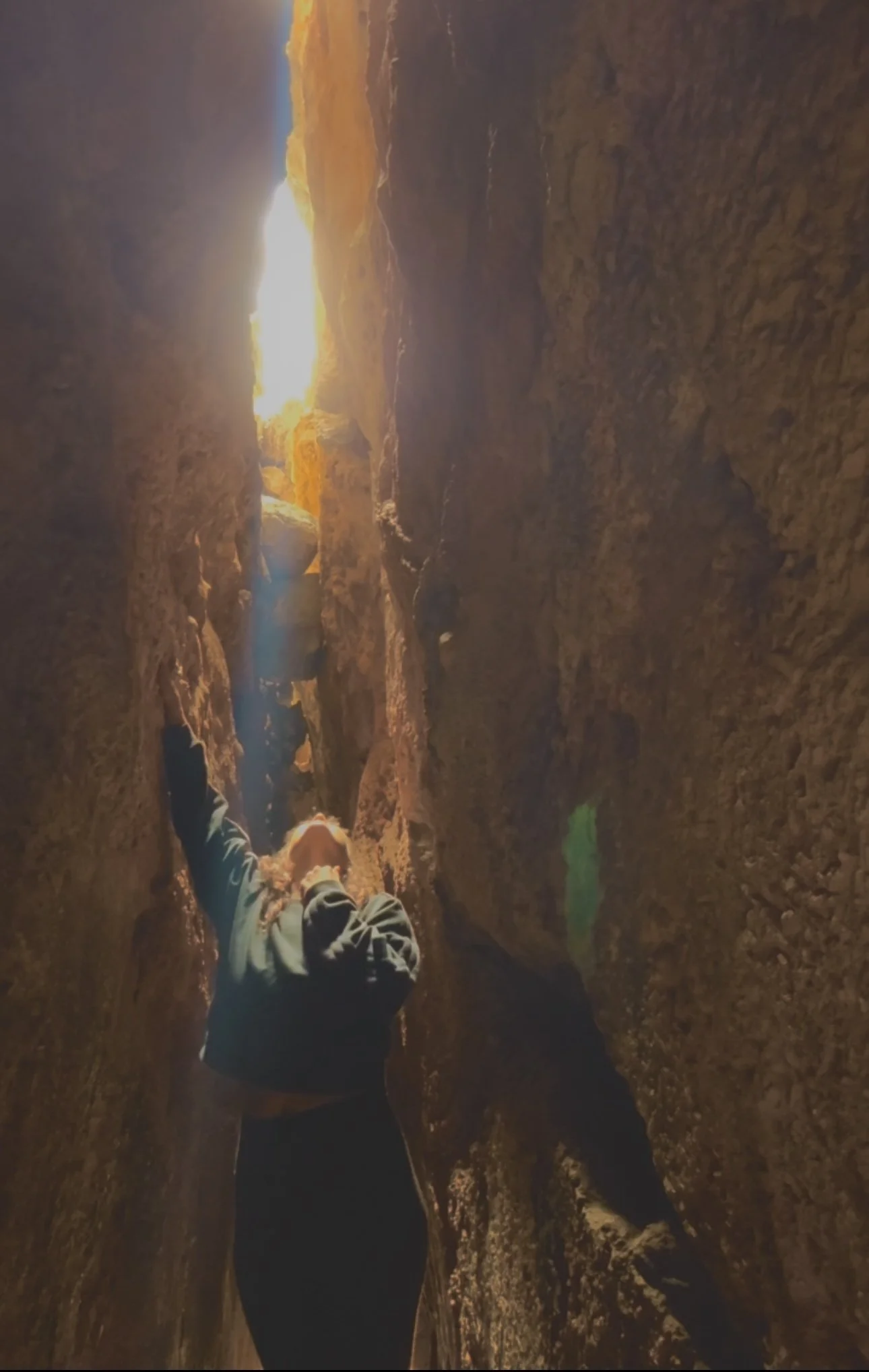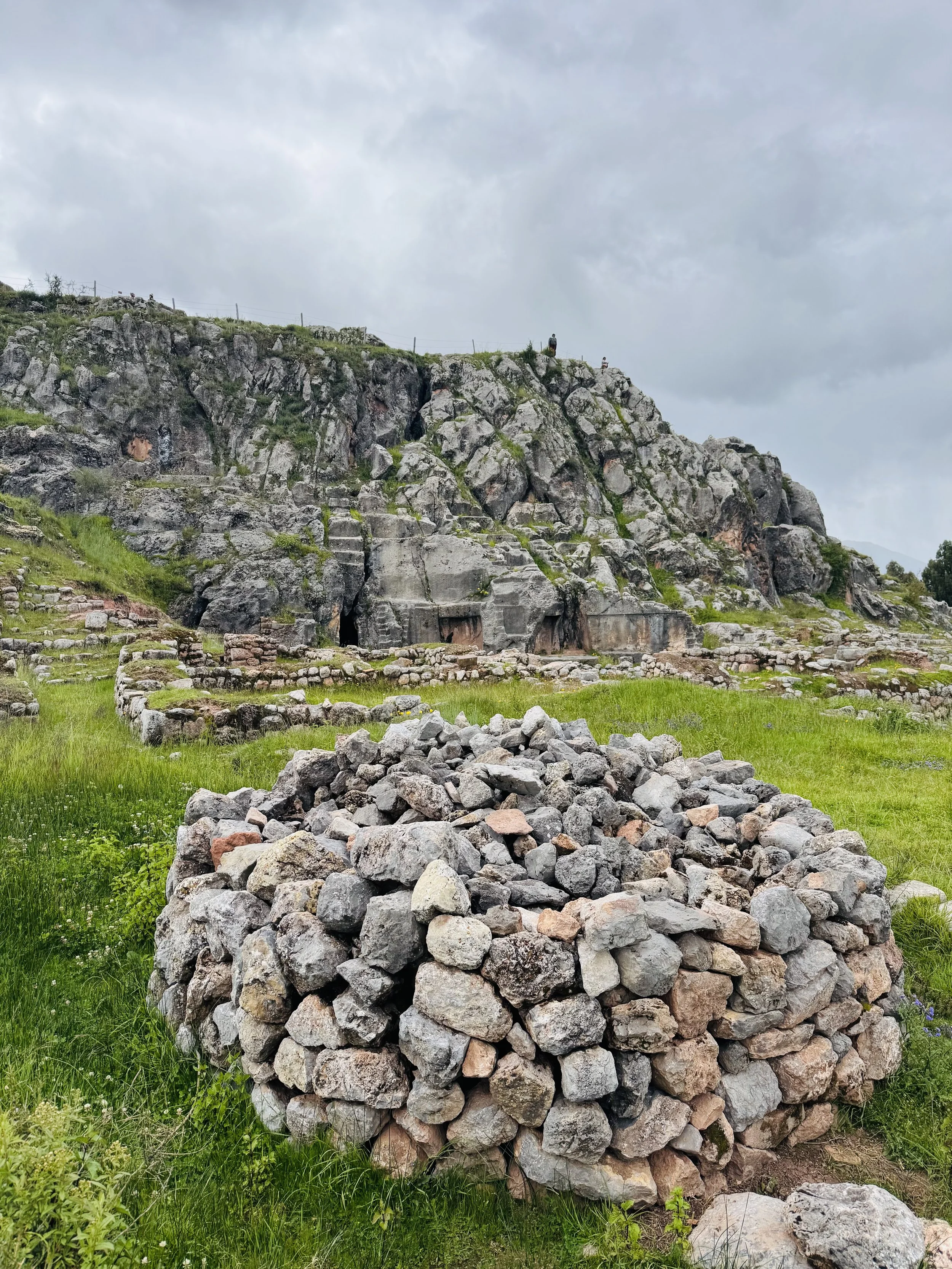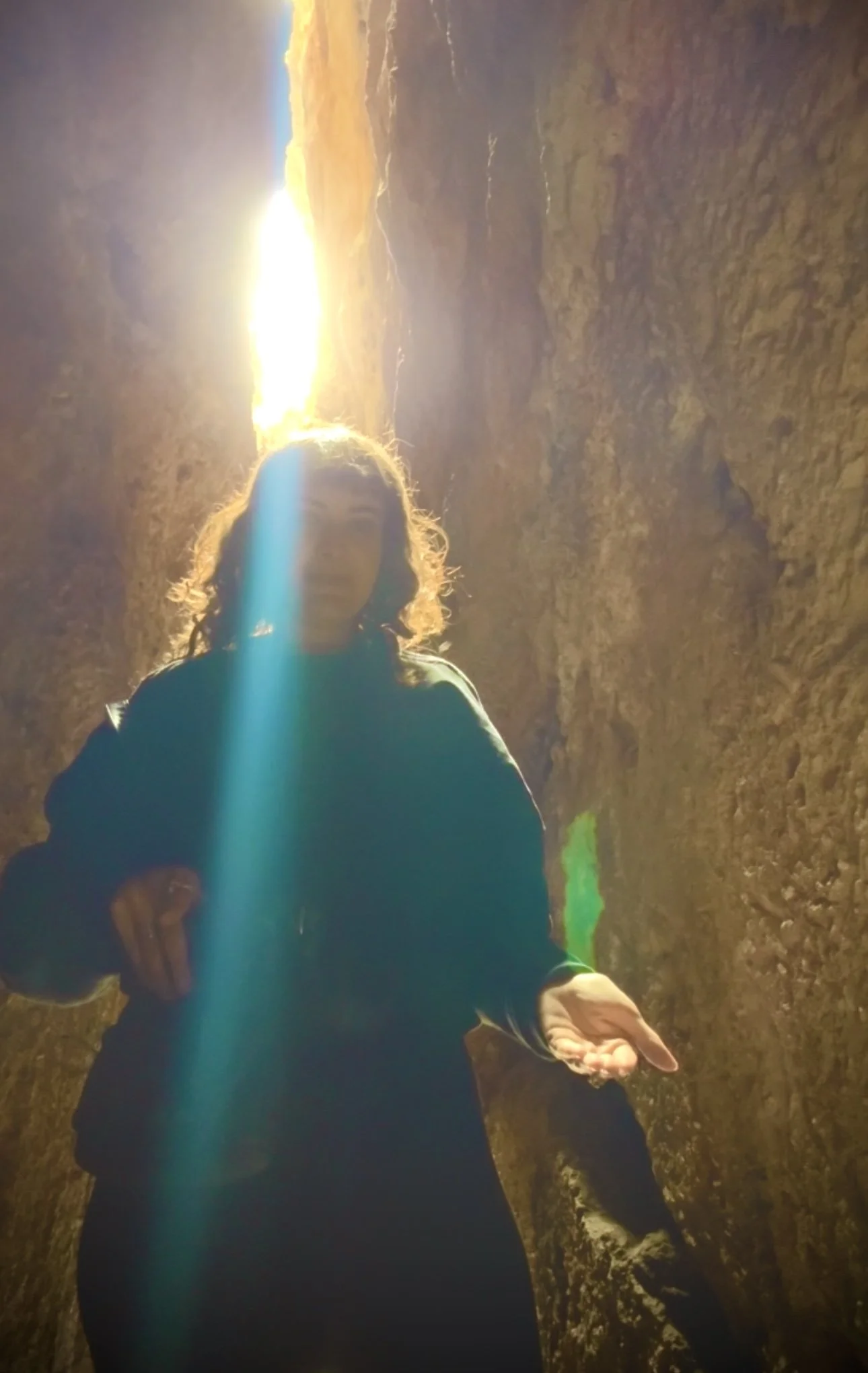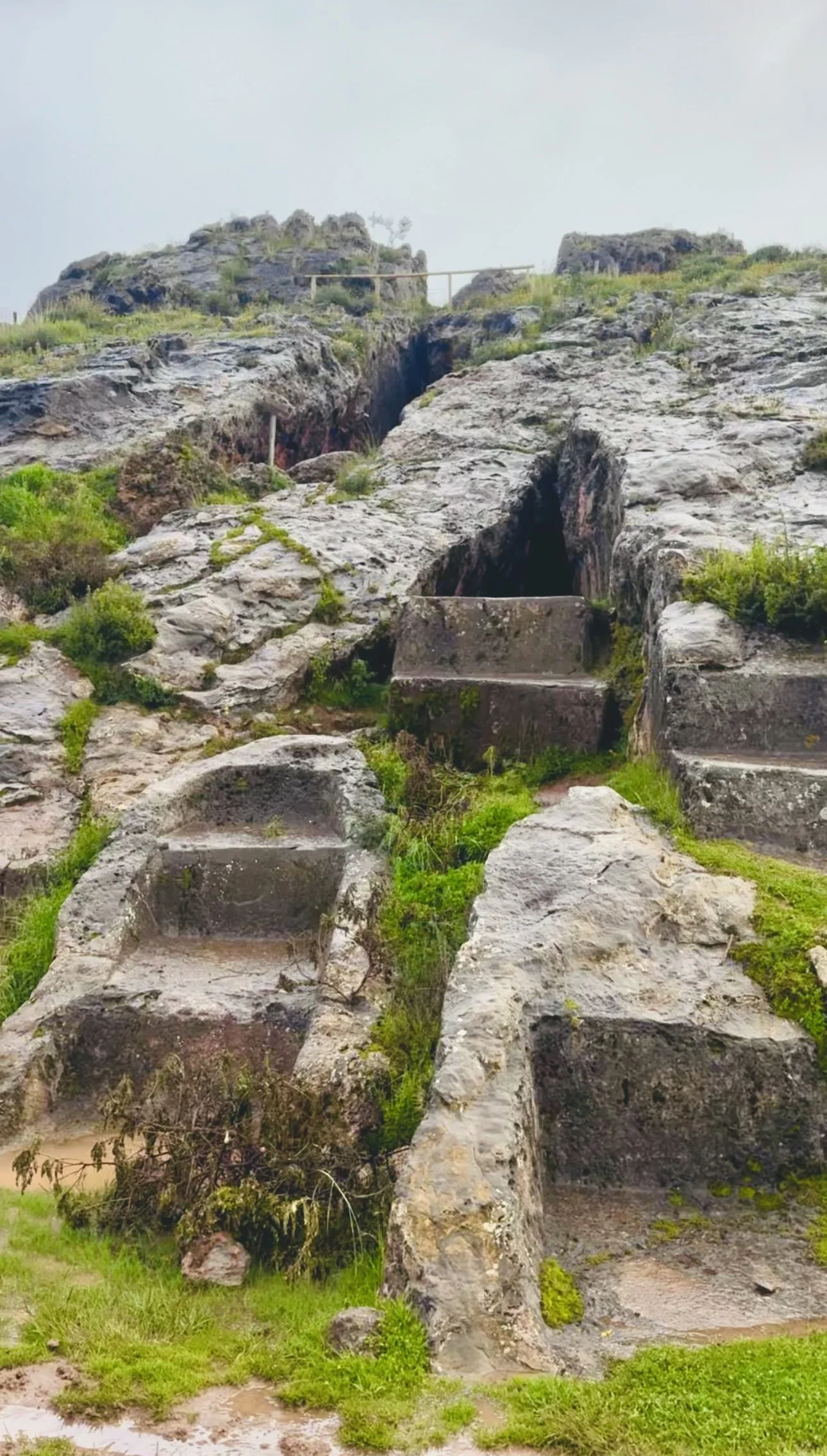In the hills near Cusco, you'll find the Temple of the Moon, or Amaru Maria Wasi (house of the serpent). It is nestled inside a natural cave amidst acres of lush, green paddocks. The cave has two entrances. One is easily accessible and commonly used for visitors/locals.
The other is roped off for preservation. While the second entrance remains restricted, it is still accessible, especially at night when the area is quiet. Inside the both caves there you’ll find Pre-Incan altars and ceremonial spaces carved seamlessly into the stone.
After 2 weeks in this region I can now conclude that this was the temple I had bonded with the most and given the last 2.5 years, it makes perfect sense that this relationship blossomed.
Don’t be mistaken, every site (especially the less popular and surprisingly free ones) had their purpose and unique energy. But, unlike most sites, I found this space to be a hotspot of connection and where I received and was immersed in profound insights.
Perhaps this was because I was able to sit alone with no distraction, resulting in the opportunity to really speak and hear. The silence allowed complete introversion and a greater depth of listening.
The experience allowed a powerful shift in perspective. I don’t think there is an English term or concept, but I suppose it was a conversation. Except, conversation doesn’t do it justice. It was almost like graceful commandments and a harmonious space of support, perspective and most importantly a form of permission to share any insights, guidance and future experiences on such taboo subjects.
A deep internal shift that words can scarcely capture. An intimate exchange, more akin to a transformative coaching session, one that guided me through some personal revelations.
The Temple of the Moon is deeply imbedded with spiritual significance. This sacred location is associated with lunar worship and offers a glimpse into ancient cosmology, ritual, and metaphysical energy.
I have been studying a course on the Neteru and anatomy of Ancient Egyptian Temples and non surprisingly, the principles and information expressed with this particular culture crossovers with a variety of other ancient civilizations.
In saying that, I was able to enter these sites with a completely different interpretation and appreciation.
For example, understanding that Temples are temporal residences of the Neter. Now, if your religious views feel challenged or insulted, it helps to understand that the Neteru weren’t necessarily physical “Gods” or “deities” they can be understood as manifestations of divine principles or natural laws/forces that govern the universe.
Each Neter represents a specific principle that shapes existence, whether it be creation, order, chaos, life, death, or cosmic balance. When you are inside, you are working with that specific law of Nature.
Think, Neter = Nature.
A temple is the location for the divine principle to express itself. When you enter into a temple you are entering the body of the Neter.
Temples often placed great emphasis on the interplay of light and water, essential forces for life and growth.
A scientific expample would be the process of a seed’s germination. It begins in darkness, only to emerge and grow through the nurturing presence of light and water.
Biblically, this concept echoes the opening lines of Genesis: 'In the beginning, there was darkness, and then God said, "Let there be light."
Just as a seed requires both light and water to flourish, so does creation. Unfolding through the divine combination of light and water. They are symbols of spiritual renewal, transformation, and the origin of Earthly life.
There is a reason for the repetition of temples across the globe, influenced and themed around the alignment of light. Be it from solstices, equinoxes, or constellations such as Orion's Belt.
Now, you can imagine how solar, lunar, and stellar light was prioritized and perceived as transmissions of information from the cosmos.
Temples were strategically mapped to receive this light, and being in the presence of this channeled energy was seen as a transmission for both cellular and spiritual activation. Many ancient cultures viewed light as a living force or divine being.
Light is perceived through our pituitary and pineal glands, and activated through the water within our cells, enhancing our connection to not only higher “consciousness” but also to non physical realms. These light transmissions can offer an opportunity to receive downloads, upgrades and activations.
The Temple of the Moon was dedicated to honoring the guiding principles and energy/light of the Moon. Inside, ceremonies and offerings were made to Mama Quilla, the Moon “goddess.” Mama Quilla was not just a celestial body, but a conscious, feminine deity influencing cycles of life, water, and time.
Yes, I know. Scientifically, the effect I captured is caused by a natural light mixed with the cave’s angles, but I also understand that the way light enters sacred sites is often intentional. My symbolic self was quite chuffed to see this odd shape mirroring a side profile of the women physique, with some type of headress or crown.
The connection between the Moon, plants, and fertility further emphasizes its role as a symbol and principle of life cycles. The Moon holds a powerful influence on all aspects of life. The lunar phases impact the way plants grow, with certain phases promoting root growth, while others favor flowering and fruiting.
So, why is the moon feminine?
Just in case you’ve been living under a rock, the connection between women and the Moon is the alignment between the lunar cycle and the menstrual cycle.
Both cycles typically span around 28 days, naturally connecting the two. This alignment has led many ancient cultures to associate the Moon with fertility and femininity. Just as the Moon nurtures the land, it also nurtures women, guiding them through their own cycles of creation and transformation.
The Moon moves through its phases of waxing, waning, and fullness. As does a woman’s body. Her emotions ebb and flow in sync with her menstrual cycle, mirroring the celestial rhythms and the life principles associated with the Moon, reflecting the sacred relationship between the feminine and the cosmos.
How about Caves?
Caves have symbolically represented a woman’s anatomy in various ancient cultures. There is a external and visual aspect of entering inbetween the thighs and into the dark, enclosed womb of Mother Earth, where the seed is conceived.
Caves were seen as portals to the underworld and the spiritual realm, like the moon they served as powerful symbols of the cycles of conception, death, rebirth, and spiritual initiation.
The Temple of Moon was a sacred space specifically for women, including priestesses who held spiritual authority. It was also a place where initiates or high priests would undergo the rites of passage to access higher spiritual knowledge, communicate with the divine and to receive guidance from the Moon goddess or Neteru. It was a space where initiates underwent various rituals, many of which would have been aimed at communicating with the divine, as well as facilitating personal and collective healing.







